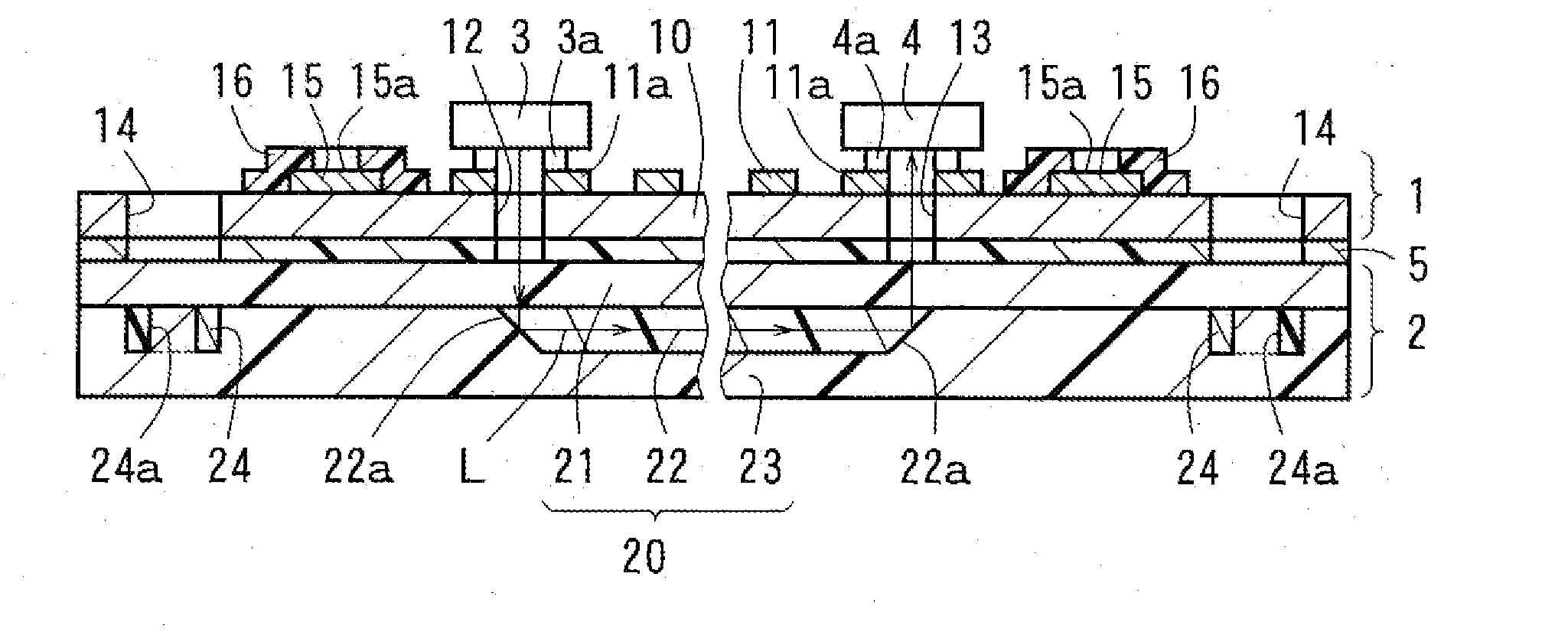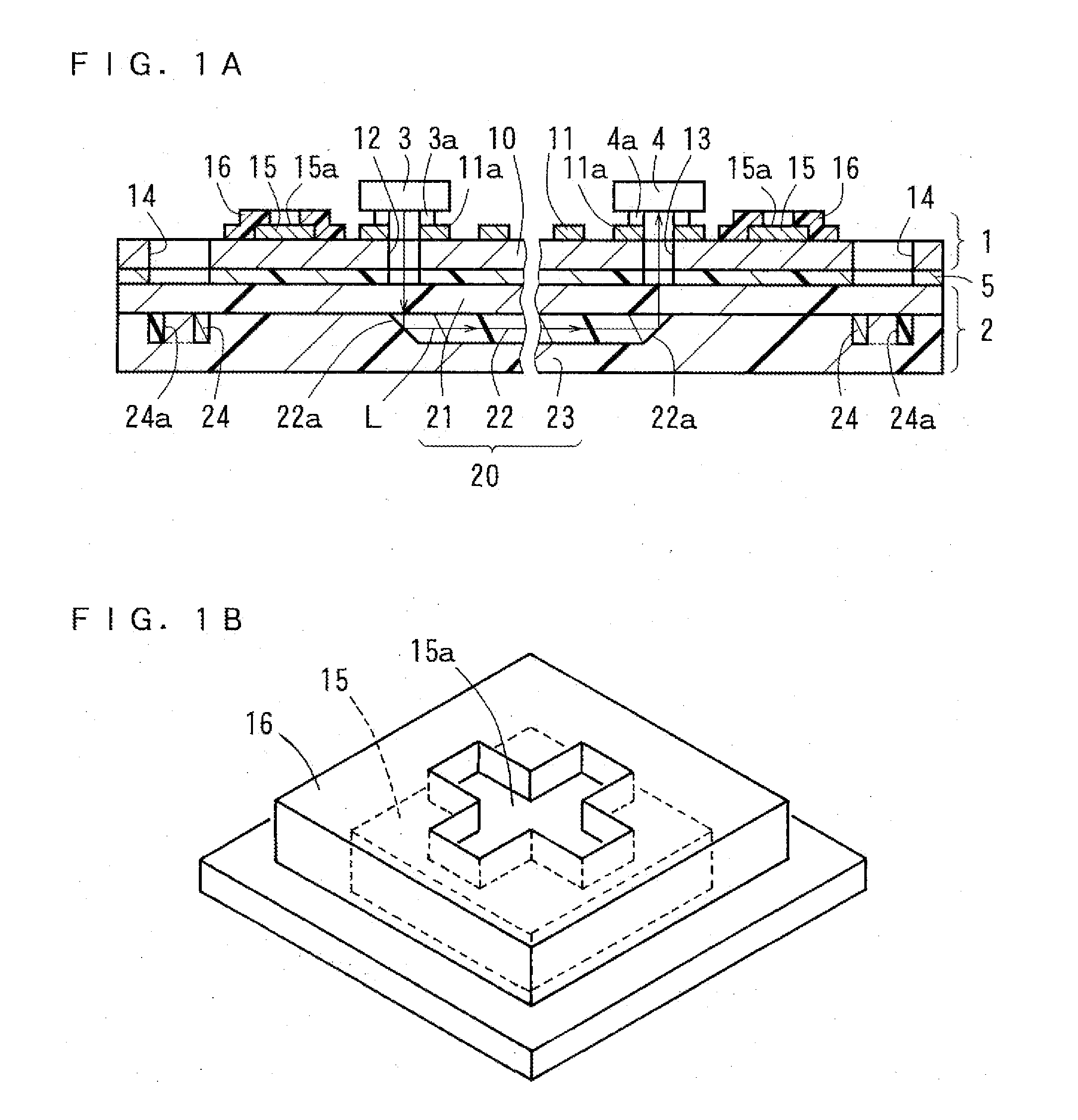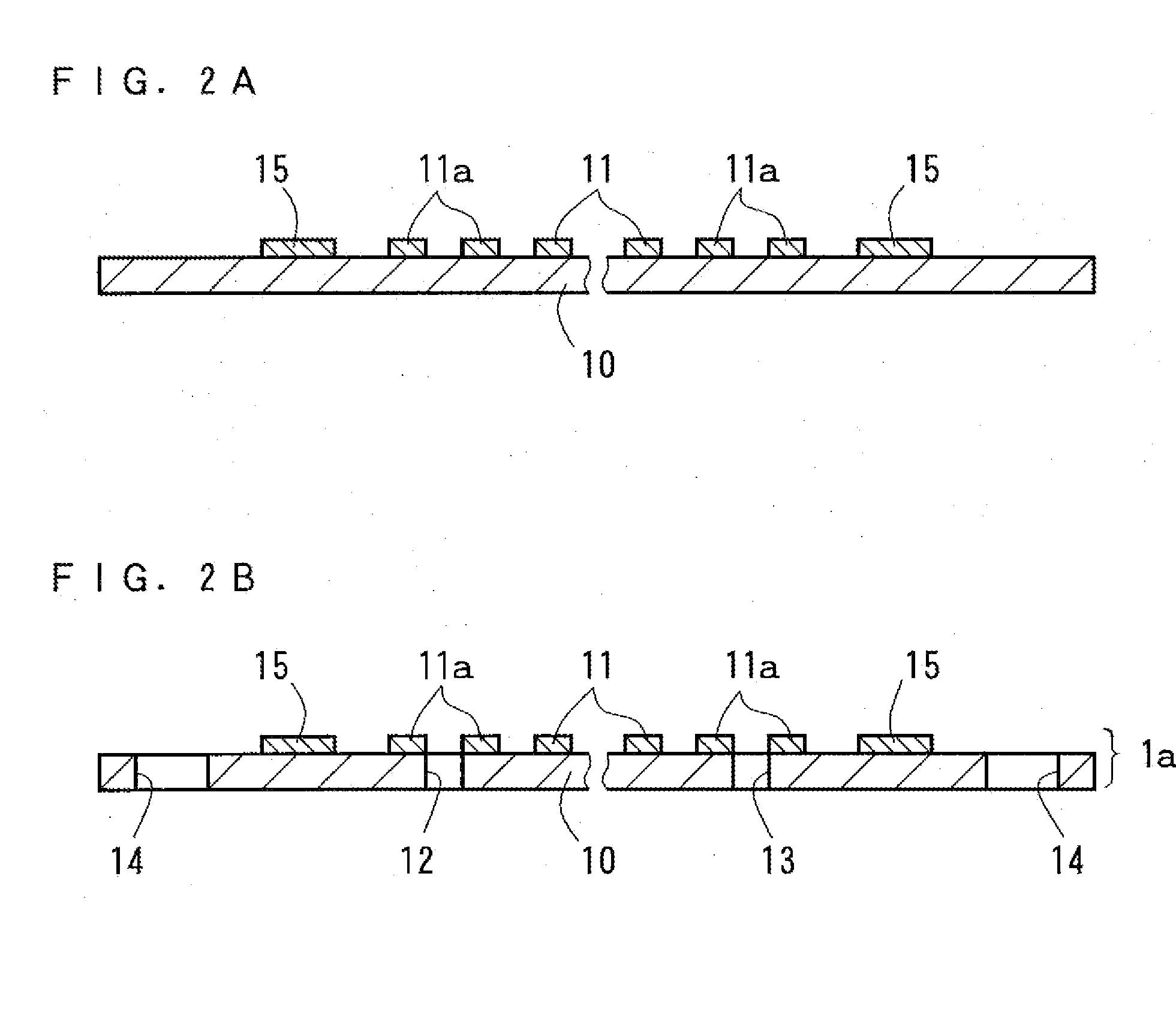Opto-electric hybrid board and manufacturing method thereof
a technology of opto-electric hybrid boards and manufacturing methods, which is applied in the direction of dielectric characteristics, inspection/indentification of circuits, instruments, etc., can solve the problems of difficult to obtain an image having a constant contrast, difficult to recognize, and long recognition time, so as to improve light propagation efficiency and easy to recognize. , the effect of high accuracy
- Summary
- Abstract
- Description
- Claims
- Application Information
AI Technical Summary
Benefits of technology
Problems solved by technology
Method used
Image
Examples
example
Electric Circuit Board
[0064]An electric circuit board was produced in which an insulation layer (having a thickness of 10 μm) made of a photosensitive polyimide resin was formed on one surface of a stainless steel plate material (SUS 304 foil having a thickness of 25 μm) and in which an electric circuit including mounting pads and second alignment marks were formed on a surface of the insulation layer, the electric circuit and the second alignment marks being formed by lamination of a seed layer made of an alloy of copper, nickel and chromium, and an electro copper plated layer. Through holes for light propagation and through holes for recognition of first alignment marks were formed in this electric circuit board.
Material for Formation of Under Cladding Layer and Over Cladding Layer
[0065]A material for formation of an under cladding layer and an over cladding layer was prepared by mixing 35 parts by weight of bisphenoxyethanol fluorene glycidyl ether (component A), 40 parts by weig...
PUM
| Property | Measurement | Unit |
|---|---|---|
| refractive index | aaaaa | aaaaa |
| refractive index | aaaaa | aaaaa |
| refractive index | aaaaa | aaaaa |
Abstract
Description
Claims
Application Information
 Login to View More
Login to View More - R&D
- Intellectual Property
- Life Sciences
- Materials
- Tech Scout
- Unparalleled Data Quality
- Higher Quality Content
- 60% Fewer Hallucinations
Browse by: Latest US Patents, China's latest patents, Technical Efficacy Thesaurus, Application Domain, Technology Topic, Popular Technical Reports.
© 2025 PatSnap. All rights reserved.Legal|Privacy policy|Modern Slavery Act Transparency Statement|Sitemap|About US| Contact US: help@patsnap.com



